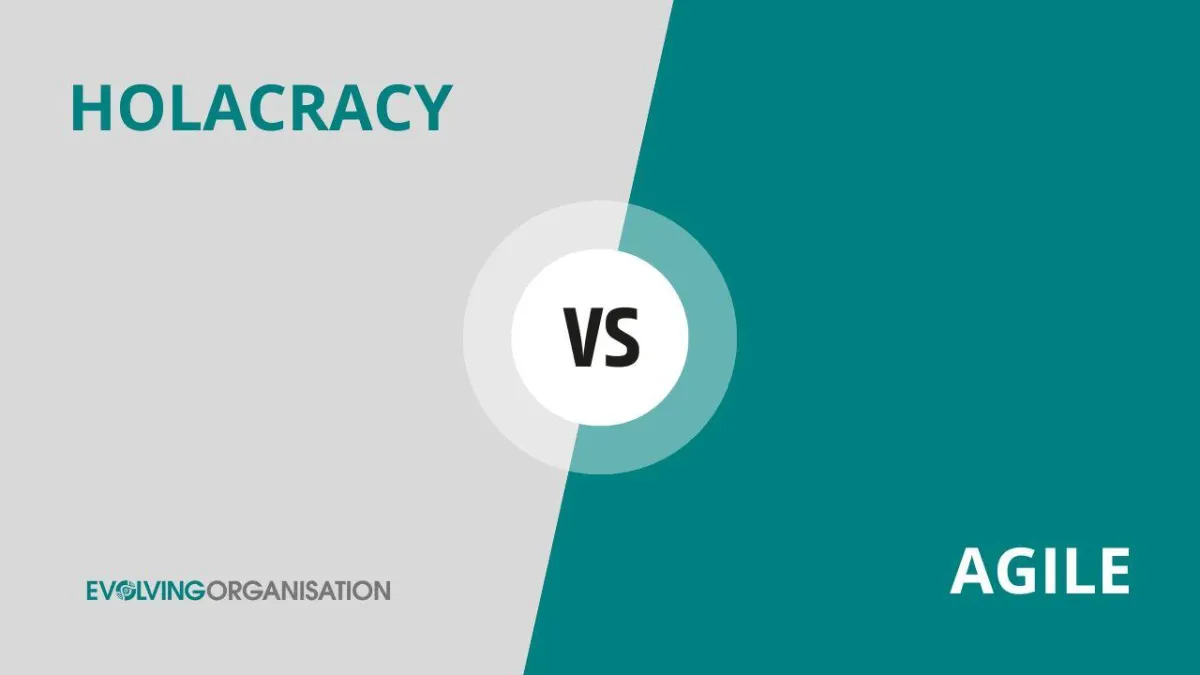
Holacracy vs Agile
Understanding the differences between Holacracy and Agile is essential for organisations seeking to evolve beyond traditional hierarchies. Both frameworks aim to foster self-management, increase flexibility, and improve responsiveness.
However, they approach these goals through different structures, processes, and philosophies. This article compares Holacracy and Agile, highlighting how they work, their advantages and disadvantages, and how they can be integrated to create resilient, high-performing teams.
Comparison Table of Holacracy and Agile
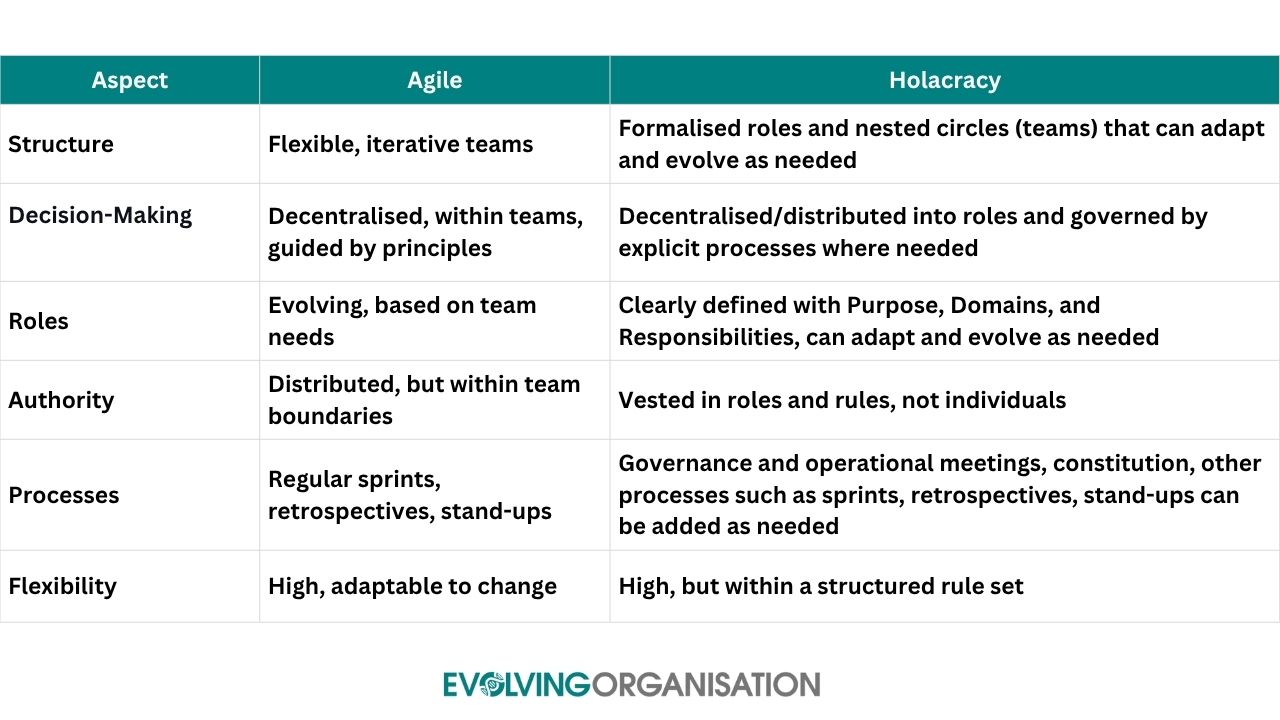
Definition of the Agile Approach
In terms of how to run teams and organisations, ‘Agile’ is a mindset and set of principles that prioritise flexibility, collaboration, and customer focus. It originated in software development but has since been adopted across many industries.
Agile organisations operate through iterative cycles called sprints, where teams continuously plan, execute, review, and adapt their work. The core idea is to respond quickly to change, foster innovation, and deliver value incrementally.
Key features include:
Cross-functional, self-managing teams.
Short, time-boxed cycles (sprints).
Regular stand-ups, reviews, and retrospectives.
Emphasis on collaboration, transparency, and continuous improvement.
In practice:
An Agile team might work on a new product feature over two weeks, holding daily stand-ups to coordinate progress, then review it and plan the following steps, adjusting their approach based on feedback and changing priorities.
Definition of Holacracy

Holacracy is a formalised system of self-management that replaces traditional hierarchy with a set of roles, circles, and explicit processes.
It distributes authority through clearly defined roles, including Purpose, Domains, and Responsibilities, and organises work within semi-autonomous circles that govern themselves via regular governance meetings. Power is vested in the rules, not in any individual or group.
Find more about what is holacracy Structure
Key features include:
Defined roles with specific Purpose, Domains, and Responsibilities.
Circles are semi-autonomous units responsible for particular functions.
Regular governance meetings are held to address emerging tensions and update roles.
A constitution that codifies the rules for decision-making and the flow of authority.
In practice:
A marketing circle might decide on campaign strategies independently, with decision rights embedded in roles. Governance meetings are held to update roles, address tensions, and ensure alignment.
How Holacracy Works, Compared to Agile
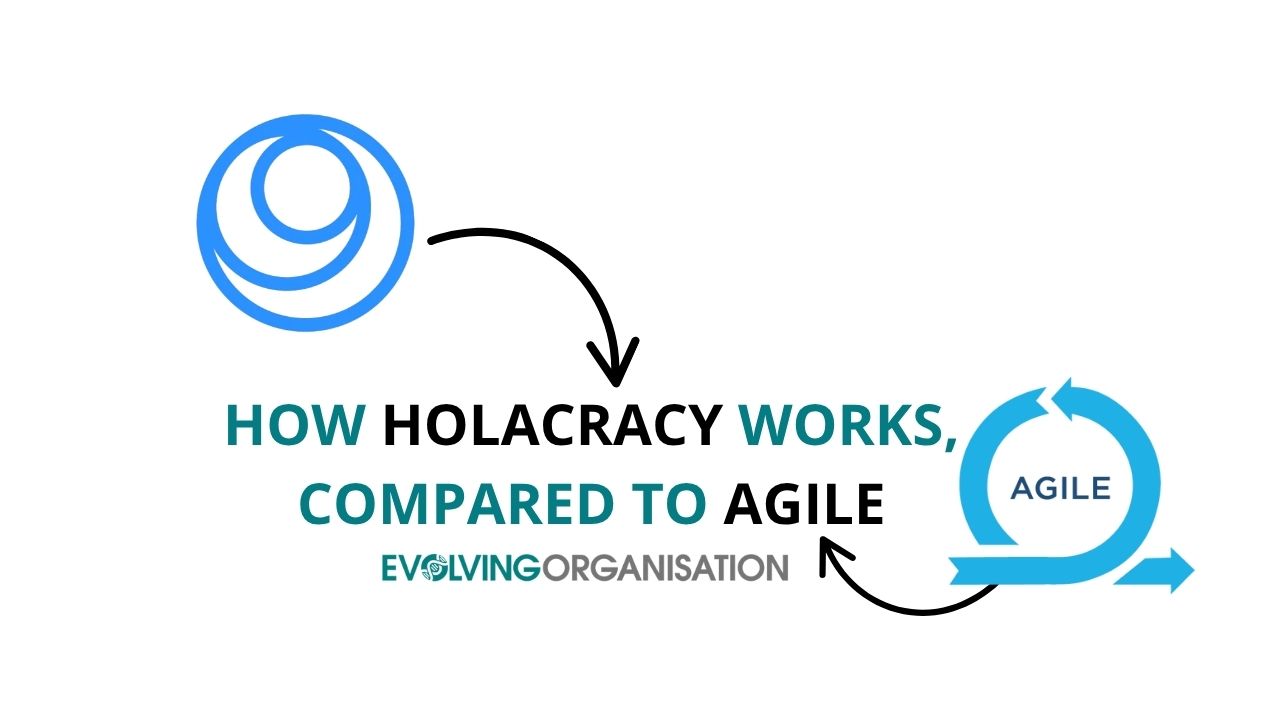
Summary:
Agile organisations adapt through short cycles and flexible teams. Holacracy organises work through roles and circles with a set of rules, enabling autonomous decision-making at every level. Both promote self-management but differ in structure and formalisation.
Advantages & Disadvantages (Holacracy vs Agile)
Agile
Advantages:
Rapid response to change.
Fosters innovation and continuous improvement.
Builds strong team collaboration.
Delivers value incrementally.
Disadvantages:
It can be hard to scale in large organisations.
Requires cultural change and discipline.
Risk of scope creep without clear boundaries.
Holacracy
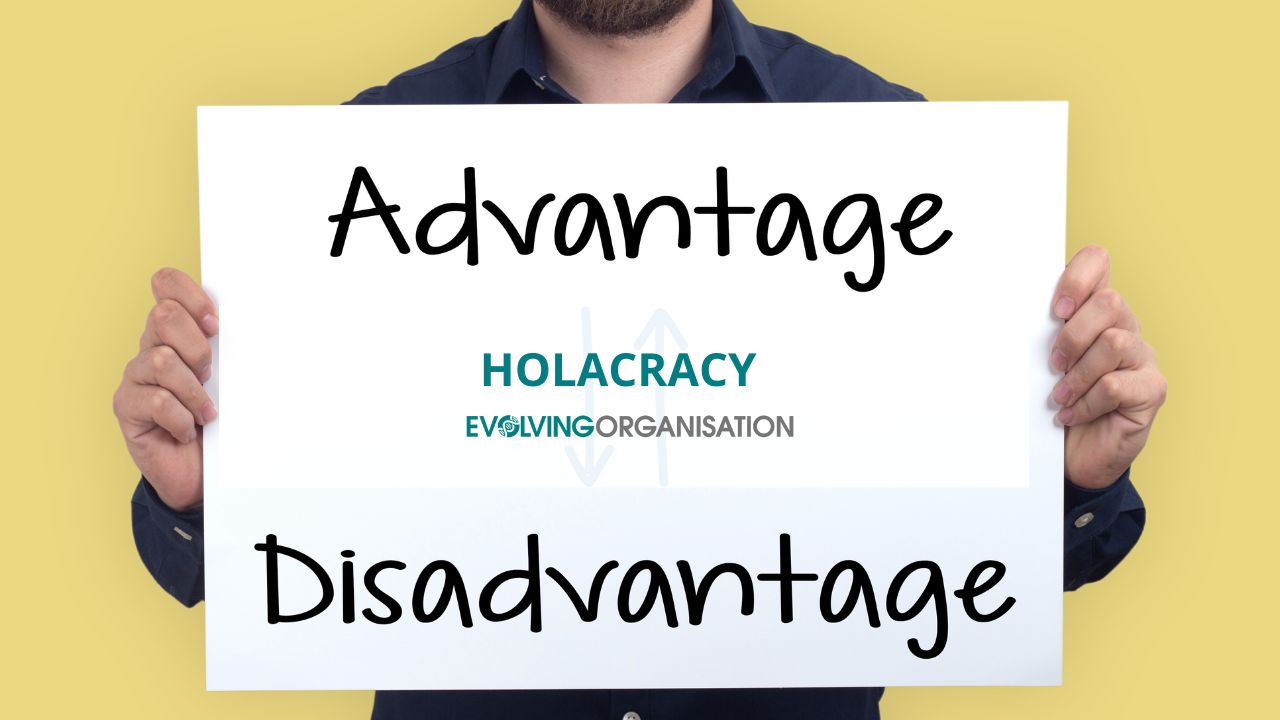
Advantages:
Clear roles and decision rights reduce confusion.
Promotes transparency and accountability.
Enables rapid decision-making through structured processes.
Empower employees to act within their roles.
Disadvantages:
Complex to implement and sustain.
Demands ongoing training and facilitation.
It can be perceived as rigid or overly procedural.
Less suitable for organisations resistant to formal rules.
Learn more About Pros and cons of holacracy
Examples
Agile
Spotify: Uses squads and tribes to organise work flexibly, enabling rapid innovation.
ING Bank: Implements Agile at scale with multi-team coordination, focusing on customer value.
Holacracy

Zappos: Transitioned to Holacracy to decentralise decision-making and foster a culture of ownership.
Mercedes-Benz.io: Utilises Holacracy to enhance agility and responsiveness within digital teams.
Valsplat: Embraces Holacracy to shift beyond traditional hierarchies and empower teams.
Challenges of Holacracy and Agile
Agile
Difficult to implement in organisations with rigid cultures.
Scaling Agile across large, complex organisations can be challenging.
Requires disciplined practices and ongoing commitment.
Holacracy
Complex to implement, requiring extensive training.
It can be perceived as bureaucratic or overly rigid.
Resistance from management or staff accustomed to hierarchy.
Similarities Between Holacracy and Agile
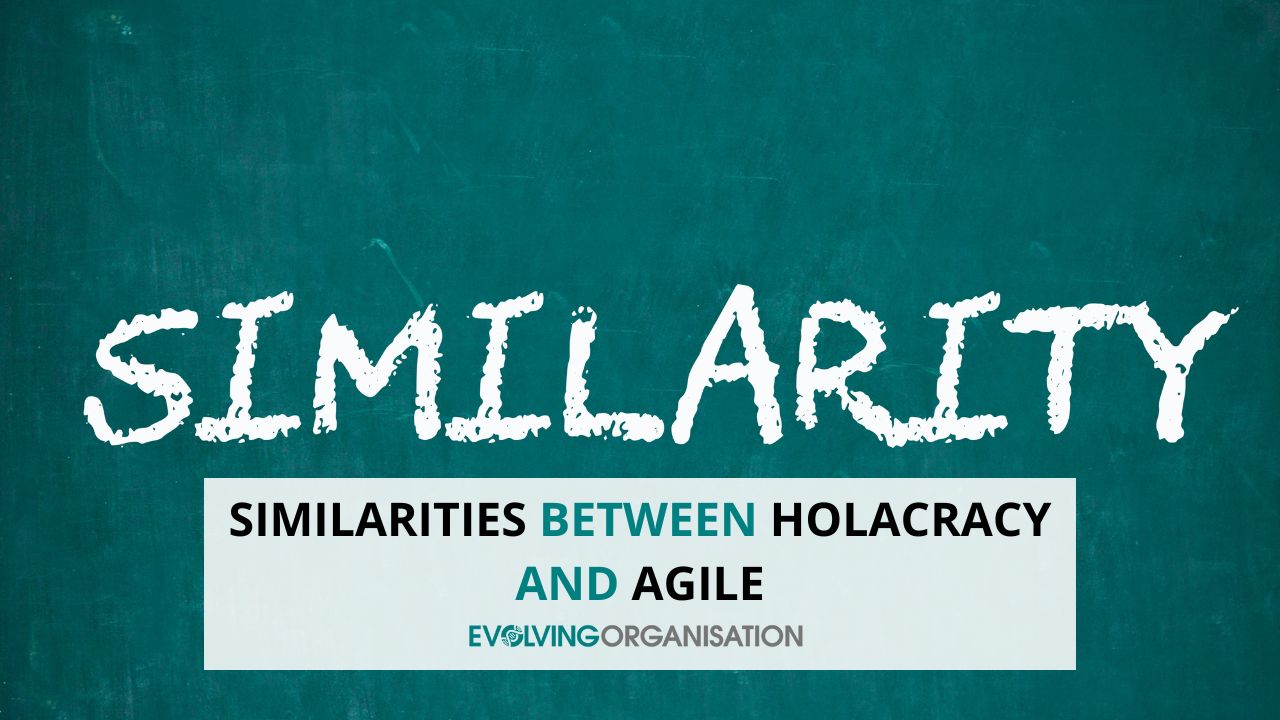
Both promote self-management and distributed authority.
They focus on transparency, participation, and responsiveness.
Both require a cultural shift towards openness and continuous learning.
They support organisations in navigating rapid change and complexity.
Working Differences Between Holacracy and Agile
Decision-Making:
Agile employs iterative cycles and team consensus, whereas Holacracy utilises distinct decision-making processes for Operations and Governance. For Operations, authority is distributed into clearly defined roles, allowing Role Leads to make decisions on issues within their scope unless there are specific policies or other requirements that must be followed. Decisions about governance (the role structure) can be made either by Circle Leads or other roles or by using an explicit governance process based on roles.
Structure:
Agile is more fluid and less formal; Holacracy relies on a detailed constitution and formal rules, which allow infinite flexibility within them.
Implementation:
Agile can be scaled gradually, while Holacracy can be progressively scaled or adopted through a comprehensive rollout.
Focus:
Agile emphasises delivering value quickly; Holacracy emphasises clarity of roles and authority flow, which builds the capacity of organisations to evolve and provide value in the longer term.
What Is a High-Performing Agile Team?
A high-performing agile team is one that consistently delivers value, adapts swiftly to change, and operates with a strong sense of ownership and collaboration. Clear roles, open communication, and a shared commitment to continuous improvement characterise such teams.
They embrace transparency, trust each other’s expertise, and respond rapidly to feedback and evolving priorities. These teams also proactively sense tensions or obstacles, take ownership of their resolutions, and align their efforts without relying on hierarchical oversight. Their ability to self-organise and adapt in real time makes them resilient and highly effective in complex environments.
Concise Tips to Help You Succeed with Agile

Start small and iterate: Implement agile practices gradually, beginning with pilot teams or projects. Utilise short cycles, or sprints, to learn and adapt.
Foster open communication by Encouraging daily stand-ups, retrospectives, and the transparent sharing of progress and challenges.
Clarify roles and responsibilities: Ensure everyone understands their purpose, domains, and decision rights to reduce confusion and increase ownership.
Prioritise value delivery: Focus on delivering minor, incremental improvements that provide immediate value to stakeholders.
Embrace flexibility: Be willing to adjust plans based on feedback and new insights rather than adhering to rigid processes.
Support psychological safety: Create an environment where team members feel safe to speak up, share ideas, and admit mistakes.
Use visual management tools: Implement boards, charts, or dashboards to track work, tensions, and decisions openly.
Invest in training: Provide ongoing education on agile principles and practices to build competence and confidence.
Interesting Holacracy Elements to Make Teams More Agile
Holacracy introduces several elements that can significantly enhance team agility. These include:
Role clarity with Purpose, Domains, and Responsibilities: Clear roles empower team members to make decisions independently within their areas, reducing bottlenecks and increasing responsiveness.
Structured governance processes:
Regular governance meetings surface tensions, review roles, and adapt structures quickly, supporting continuous evolution.
Decision rights embedded in roles:
Authority flows explicitly through roles, enabling faster, localised decision-making without waiting for hierarchical approval.
Spaces for innovation and adaptation:
The system creates personal, tribe, role, and organisational spaces—each designed to facilitate autonomous action, creative problem-solving, and alignment.
Explicit rules and processes:
The constitution provides a shared framework that guides behaviour and decision-making, ensuring consistency and clarity while allowing flexibility.
By integrating these elements, teams become more autonomous, responsive, and aligned with agile principles, fostering a culture of continuous learning and adaptation that thrives in complex and uncertain environments.
Final Thoughts
Both Holacracy and Agile are powerful frameworks rooted in self-organising teams and distributed authority. They serve different organisational needs but share the goal of creating more adaptable, empowered, and resilient organisations.
Success depends on cultural readiness, ongoing training, and a clear understanding of each system’s principles. When applied thoughtfully, both approaches can significantly enhance organisational agility and employee engagement.
Holacracy can be adopted in full, or just the practices that suit a specific team or organisation can be adopted. If you are interested in embarking on this journey, we can help you assess your organisation’s readiness and ensure you have the resources and mindset to sustain the change.
Take our free 10-minute Team Needs assessment here to determine if your Team has needs that this approach could address. Our Team Clarity & Faster Decision-Making program can then help you adopt Holacracy practices fully or partially. With the right approach, such post-hierarchical ways of working can be a powerful tool for navigating today’s complex and uncertain business landscape.
Suppose you want to learn these practices in-depth. Programs like Team Clarity, Faster Decision-Making, and The Meetings Revolution offer step-by-step guidance and practical tools to help your Team make these shifts confidently and effectively.
When you move beyond hierarchy and empower your Team to own their roles, communicate openly, and adapt quickly, you don’t just improve performance—you create the foundation for lasting success in a fast-changing world.
This blog serves as a continuation of our commitment to improving performance and decision-making within organisations. Stay tuned for our next instalment, where we will delve deeper into a range of practical tools that do this.
For more insights and resources, visit our website. Together, let’s evolve and adapt to the challenges of our dynamic world, building a better, more collaborative future together.


